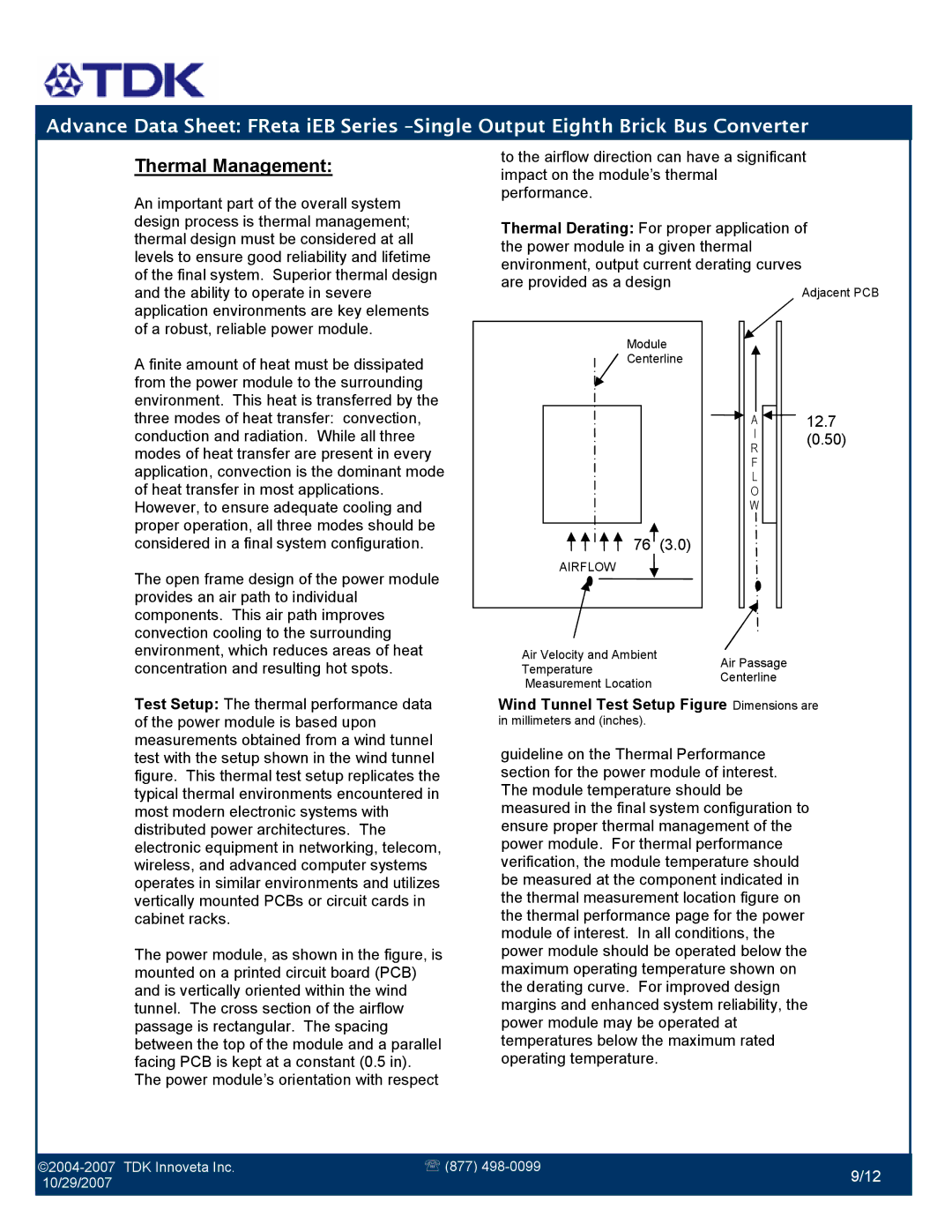iEB Series specifications
The TDK iEB Series represents a significant advancement in the realm of energy-efficient power supplies, designed to cater to various applications requiring highly dependable performance. TDK, a global leader in electronic components and solutions, has integrated innovative technologies into the iEB Series to enhance efficiency, reliability, and versatility.One of the standout features of the iEB Series is its exceptional efficiency rating, which often exceeds 90%. This high level of efficiency is crucial for modern electronic devices, as it not only reduces energy consumption but also minimizes heat production, prolonging the lifespan of components and lowering cooling requirements. The iEB Series is built with state-of-the-art materials and advanced circuit designs, which contribute to its efficiency by reducing energy losses during the power conversion process.
The iEB Series is equipped with a wide input voltage range, making it suitable for various applications across different sectors, including industrial, telecommunications, and renewable energy. The flexibility of input voltage ensures that these power supplies can operate effectively in diverse environments and configurations, delivering robust performance in demanding conditions.
Another key characteristic of the iEB Series is its compact design. TDK has prioritized space-saving solutions, allowing these power supplies to fit into tighter spaces without sacrificing performance. This is particularly advantageous for applications where board real estate is limited, and efficient design is paramount.
The series also features built-in protection mechanisms, including overvoltage, overcurrent, and thermal protection. These safety features ensure that the power supplies operate reliably and mitigate risks associated with electrical anomalies, ensuring a longer operational life for both the power supply and connected devices.
Moreover, the iEB Series adopts advanced digital control technologies, enabling precise regulation of output voltages and currents. This capability allows for better system integration and adaptability in dynamically changing electrical environments, making the iEB Series ideal for modern smart devices and IoT applications.
In summary, the TDK iEB Series presents a perfect combination of efficiency, versatility, and reliability. With its high efficiency, broad input range, compact design, and comprehensive protection features, it stands as a leading choice for engineers and designers looking for a dependable power supply solution in their projects. The commitment of TDK to innovation ensures that the iEB Series remains at the forefront of power supply technology.

